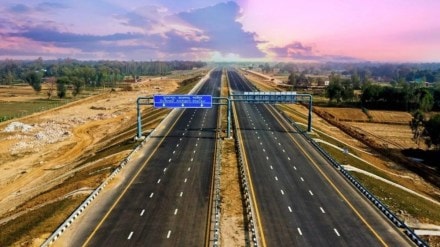India’s growing network of expressways is reshaping the travel experience, blending speed with comfort. These sleek highways not only reduce travel times but also promise smoother rides and enhanced safety. From cutting through scenic landscapes to linking economic hubs, expressways are also lifelines fueling connectivity, growth, and modern mobility dreams.
While several expressways have become the new favorites of petrol heads and travel enthusiasts, let’s take a look at some of the upcoming expressways.
Delhi-Mumbai Expressway
The Delhi-Mumbai Expressway, set to cut the distance between Delhi and Mumbai by 180 km (from 1,424 km to 1,242 km), marked a milestone this week with the opening of a 28-kilometer stretch to the public. This eight-lane road will significantly enhance inter-state connectivity across Delhi, Haryana, Rajasthan, Gujarat, and Maharashtra.
This expressway is poised to slash travel time from 24 hours to just 12, revolutionizing connectivity and boosting travel efficiency.
Last year, Roadways Minister Nitin Gadkari had said that the Delhi-Mumbai Expressway will be the first one to be developed with a 21-meter median on principles of forgiving highways allowing inward expansion.
The expressway is set to carry features rarely seen in Indian road infrastructure. According to the Ministry of Road Transport and Highways, it will include a state-of-the-art traffic management system. A dedicated three-meter-wide utility corridor will accommodate fiber optic cables, pipelines, and solar power generation. Additionally, the expressway will feature rainwater harvesting every 500 meters, with over 2,000 water recharge points planned.
Earlier this year, the completion time of the expressway had been adjusted to October 2025.
Bengaluru-Chennai Expressway
The Bengaluru-Chennai Expressway is one of the Greenfield Expressways currently under development in India. This scenic route is set to cut down the travel time between these two crucial cities. It will measure 262 kilometres in length and will pass through Karnataka, Andhra Pradesh and Tamil Nadu, with a designed speed limit of 120 km/h.
Being built at a cost of over Rs 17,000 crore, the completion time of the expressway is near August 2025.
At the moment, a 71 kilometre stretch of the Bengaluru-Chennai Expressway is open to the public.
Dwarka Expressway
The Dwarka Expressway, spanning 29 kilometers, includes 18.9 km in Haryana and 10.1 km in Delhi. It begins at Shiv-Murti on National Highway 8 and concludes near the Kherki Daula toll plaza, an The Indian Express had said.
The expressway will link Shiv Murti near IGI Airport to the Kherki Daula toll, providing a better commuting option for travelers between Gurgaon and Delhi.
It will be India’s first elevated eight-lane access-controlled expressway featuring tunnels, underpasses, flyovers, and elevated structures. It will also include a distinctive 34-meter-wide elevated road spanning 9 kilometers, supported by single pillars.
The project, with an estimated cost of Rs9,000 crore, is divided into four segments: two in Delhi (10.01 km) and two in Haryana (18.9 km). The investment breakdown includes Rs 2,507 crore for the first phase in Delhi, Rs 2,068 crore for the second phase, Rs 2,228 crore for the third phase, and Rs 1,859 crore for the fourth phase.
Ganga Expressway
The 600-kilometer-long Ganga Expressway will connect Meerut to Prayagraj, passing through key districts such as Amroha, Bulandshahr, Unnao, Rae Bareli, and Pratapgarh.
It is estimated to be built at a cost of Rs 36,000 crore.
Spanning 518 villages across 12 districts, the Ganga Expressway will connect eastern and western Uttar Pradesh, drastically reducing travel time between Meerut and Prayagraj. It will initially be designed as a six-lane roadway, expandable to eight lanes, and will support a maximum speed of 120 kilometers per hour.
Earlier this year, Chief Minister Yogi Adityanath instructed the Uttar Pradesh Expressway Industrial Development Authority (UPEIDA) to accelerate the construction of the Ganga Expressway, targeting its completion by year-end.
Earlier this year, Chief Minister Yogi Adityanath directed the Uttar Pradesh Expressway Industrial Development Authority (UPEIDA) to expedite the construction of the ‘Ganga Expressway,’ aiming for completion by the end of 2024.
Delhi-Amritsar-Katra Expressway
The Delhi-Amritsar-Katra Expressway aims to enable a six-hour drive from Delhi to Katra, shortening the journey by 58 kilometers. Earlier this year, the Haryana section of the Delhi-Amritsar-Katra Expressway was thrown open to the public.
Stretching about 669 kilometers, the expressway will also offer quicker access to Amritsar, cutting travel time from Delhi to just four hours. It spans Delhi, Punjab, Jammu and Kashmir. Speed limits for the expressway have been set at 120 km/h for light vehicles and 80 km/h for heavy vehicles.
